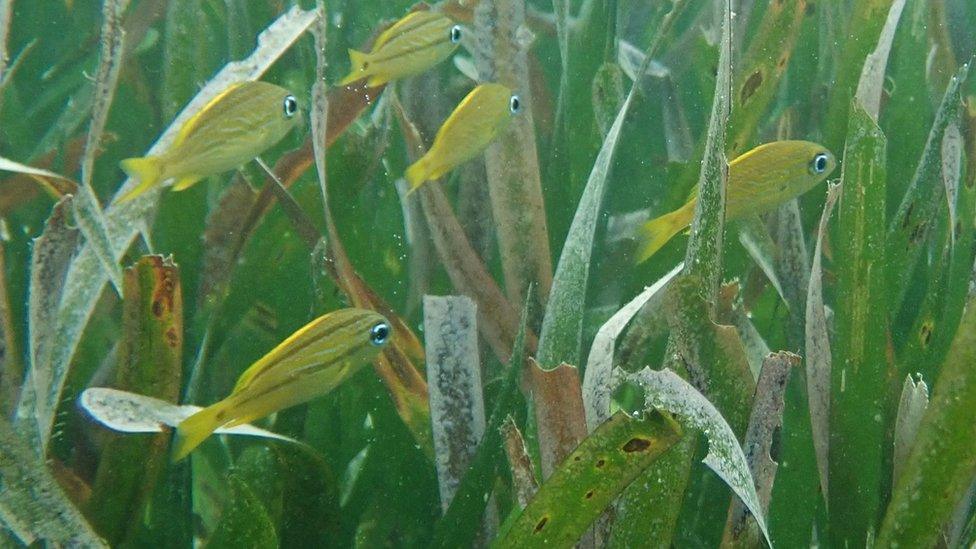'Wonder plant' will tackle climate change, conservationists say
- Published
Carbon-reducing seagrass to be planted off the Pembrokeshire coast
Acres of underwater seagrass meadows are to be restored off the Welsh coast to tackle climate change.
A million seeds of the "wonder plant" have been gathered from existing meadows and will be planted over 4.9 acres at Dale Bay in Pembrokeshire.
Conservationists say it will be the UK's biggest seagrass restoration - after 92% of it has been lost over the last 100 years.
Experts say seagrass acts as a "nursery for a wide variety of marine life".
WWF, Sky Ocean Rescue and Swansea University are starting the replanting this winter as they say the plant is key to reducing carbon dioxide - a gas which contributes to global warming.
"When we think about climate change we probably think we need to plant more trees," said Jenny Oates of WWF.
"We wouldn't necessarily think that seagrass is something that can store carbon 35 times faster than a tropical forest.
"So actually we can do something right here in the UK to address the climate emergency."


UK seagrass meadows house species such as endangered seahorses and sea snails
Why is seagrass important?
It takes carbon from the atmosphere up to 35 times faster than tropical rainforests
It accounts for 10% of annual ocean carbon storage globally, despite only taking up 0.2% of the seafloor
It protects coasts from coastal erosion
It is a habitat for many types of fish like cod, plaice and pollock
It produces oxygen
It cleans the ocean by absorbing polluting nutrients
Source: WWF, Sky Ocean Rescue, Swansea University

Experts say 2.5 acres of seagrass can support 80,000 fish

Richard Unsworth, of Swansea University, said: "We've lost extensive areas of seagrass around the UK over the last 100 years…
"We're basically trying to bring that back over in west Wales by working very closely with some local communities to understand how we can restore these seagrass plants, whilst at the same time respecting people's livelihoods - the fishermen and the boaters who live and work in these areas - so that everyone develops this amazing resource."
Dale Bay, which had previously lost its seagrass meadow, has the right water depth and light levels for seagrass to thrive there again, according to conservationists.
The disappearance of seagrass is caused by pollution, run-off from the land, coast development and damage from boat propellers and chain moorings.

More than 90% of the UK's seagrass meadows have disappeared over the last 100 years
If the pilot project works, environmentalists want it to be replicated around the UK coastline.
"We are urgently calling on governments to use the model our project is creating to bring back these lush underwater meadows," Alec Taylor, of WWF, added.
- Published21 May 2018

- Published16 February 2018

- Published17 November 2017

- Published24 April 2017

- Published16 February 2017

- Published10 October 2016

- Published13 January 2016
